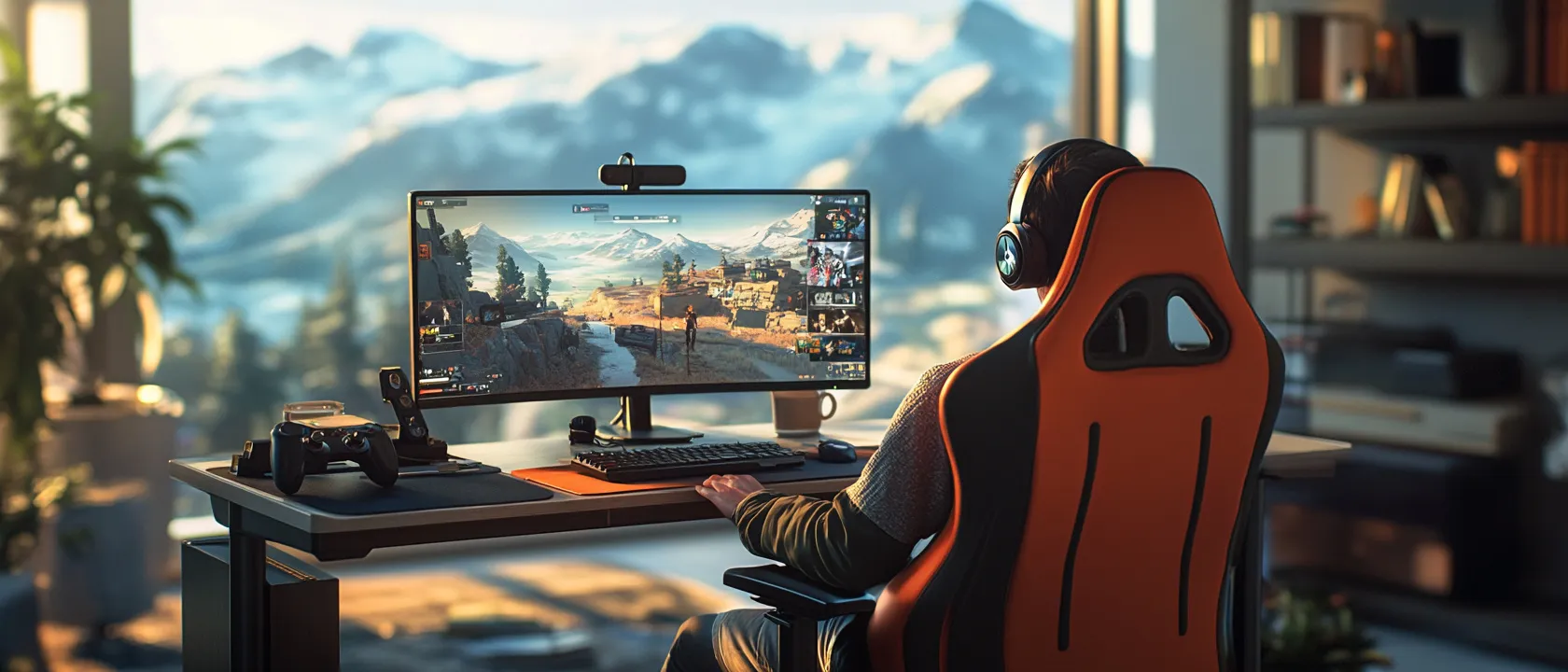The gaming landscape continues to evolve at a breathtaking pace, with next-generation consoles offering unprecedented power, innovative features, and expanding ecosystems that promise to revolutionize how we play. For consumers, this exciting evolution comes with a challenging decision: in a market filled with compelling options, which gaming console truly deserves your hard-earned money? This comprehensive analysis examines the current generation of gaming hardware—exploring their strengths, weaknesses, unique selling points, and overall value propositions—to help you make an informed purchasing decision that aligns with your gaming preferences, budget constraints, and entertainment needs.
The Current Console Landscape: Major Players and Market Positioning
The contemporary gaming console market features three primary competitors, each with distinct approaches to capturing the gaming audience:
PlayStation 5 Pro: Sony’s Premium Performance Proposition
Sony’s mid-generation enhancement to the PlayStation 5 represents their commitment to pushing technical boundaries. With upgraded components and refined features, the PS5 Pro positions itself as the premium performance option for console gamers who demand cutting-edge visuals and seamless gameplay experiences.
Key specifications include:
- Enhanced GPU with 67% more compute units than the base PS5
- 16GB of GDDR6 memory with increased bandwidth
- Advanced ray tracing capabilities
- AI-accelerated upscaling technology
- 2TB SSD storage (up from 1TB in the standard model)
- Retail price: $599 (Digital Edition), $699 (Disc Edition)
Xbox Series X/S: Microsoft’s Ecosystem-Centric Approach
Microsoft continues to evolve its two-tier hardware strategy with the Xbox Series X representing high-end performance and the Series S offering a more affordable entry point. However, Microsoft’s true focus has shifted toward a service-first philosophy that emphasizes their Game Pass subscription and cloud gaming infrastructure.
Key specifications include:
- Series X: 12 TFLOPS GPU, 16GB GDDR6 RAM, 1TB SSD
- Series S: 4 TFLOPS GPU, 10GB GDDR6 RAM, 512GB SSD
- Xbox Velocity Architecture for optimized loading and performance
- Extensive backward compatibility
- Retail price: $499 (Series X), $299 (Series S)
Nintendo Switch 2: The Flexible Gaming Innovation
Nintendo’s successor to the wildly successful Switch maintains the hybrid console concept while substantially upgrading the technical capabilities. Rather than competing directly on raw specifications, Nintendo continues to prioritize innovative gameplay experiences and signature first-party franchises.
Key specifications include:
- Custom NVIDIA Tegra processor with DLSS support
- 8GB RAM
- 256GB internal storage (expandable)
- Enhanced 8-inch OLED display (1080p in handheld mode)
- 4K output capability when docked
- Improved Joy-Con controllers with enhanced haptic feedback
- Backward compatibility with original Switch games
- Retail price: $399

Performance Comparison: What Really Matters for Gamers
When evaluating console performance, several key factors determine the actual gaming experience beyond marketing buzzwords:
Visual Fidelity and Frame Rates
The PlayStation 5 Pro currently offers the most impressive raw graphical performance in the traditional console space. Its enhanced GPU enables more consistent 4K resolution gameplay while maintaining 60fps in demanding titles where the standard PS5 might drop to lower resolutions or frame rates. The system’s upgraded ray tracing capabilities deliver more realistic lighting, reflections, and shadows in supported games.
The Xbox Series X remains highly competitive, typically delivering visual experiences very close to the standard PS5, though it now lags somewhat behind the PS5 Pro in particularly demanding scenarios. The Series S, with its more modest GPU, generally targets 1080p-1440p resolutions, though its RDNA 2 architecture ensures it can still handle modern games with appropriate settings adjustments.
The Nintendo Switch 2 makes significant leaps over its predecessor but prioritizes different aspects of visual performance. While it can’t match the raw pixel-pushing capability of its competitors, the implementation of DLSS technology allows it to render games at lower internal resolutions and intelligently upscale them with minimal quality loss. This approach enables more graphically intensive games to run smoothly in both handheld and docked modes.
As gaming developer Marcus Chen observes: “Raw teraflops don’t tell the full story anymore. The efficiency of the architecture, implementation of upscaling technologies, and how developers optimize for each platform often matter more than specification sheet comparisons.”
Loading Times and System Responsiveness
All three manufacturers have prioritized storage performance in their latest hardware, resulting in dramatically improved loading times compared to previous generations:
- PS5 Pro and standard PS5 utilize custom SSD solutions that deliver 5.5GB/s raw throughput, with compressed data reaching up to 9GB/s
- Xbox Series consoles implement the Xbox Velocity Architecture, combining their SSD with hardware decompression for effective throughput between 4.8-6GB/s
- Nintendo Switch 2 employs faster storage than its predecessor, though its solution doesn’t quite match the custom architectures of its competitors
In practical terms, the difference in loading performance between PS5 Pro and Xbox Series X is minimal in most cross-platform titles, with games typically loading within seconds rather than the minutes experienced in previous generations. The Switch 2 shows marked improvement over the original Switch but may still exhibit somewhat longer loading times in more demanding games.
System responsiveness—the feel of navigating menus, switching between games, and multitasking—is excellent across all three platforms, with the PS5 Pro offering particularly fluid performance even when juggling multiple applications.
Game Performance Stability
Perhaps more important than peak performance is how consistently each system maintains its frame rates in demanding scenarios. Digital Foundry’s extensive testing indicates:
- PS5 Pro demonstrates the most stable performance in graphically intensive titles, maintaining target frame rates more consistently than other consoles
- Xbox Series X generally provides excellent stability, though some titles may exhibit more frame time variation in very demanding scenes compared to PS5 Pro
- Series S mostly maintains solid performance at its targeted resolutions, though it occasionally requires more aggressive dynamic resolution scaling
- Switch 2 shows impressive stability given its form factor, particularly in first-party titles optimized specifically for the hardware
As professional game reviewer Sarah Johnson notes: “Frame rate consistency affects gameplay feel more than many players realize. A stable 30fps can actually provide a better experience than a fluctuating frame rate that averages higher but constantly stutters.”

Game Libraries and Exclusives: The Content Question
While hardware specifications provide the foundation, available content ultimately determines a console’s value proposition for most gamers:
PlayStation’s Exclusive Advantage
Sony continues to leverage its strong first-party studios and strategic partnerships to deliver compelling exclusive content. Recent and upcoming PlayStation exclusives include new entries in the God of War, Horizon, Spider-Man, and Ghost of Tsushima franchises. Additionally, Sony has secured timed exclusivity for several major third-party titles.
The PlayStation advantage extends beyond individual games to include exclusive content within multiplatform releases. Many major third-party franchises offer PlayStation-specific missions, early access periods, or cosmetic items that aren’t available on other platforms.
PlayStation’s Japanese development partnerships also secure console exclusivity for several prominent Japanese developers, creating a distinct library appeal for fans of these studios.
Xbox’s Game Pass Revolution
While Microsoft has strengthened its exclusive lineup through studio acquisitions including Bethesda and Activision Blizzard, the true differentiator for Xbox remains Game Pass. This subscription service provides access to hundreds of games for a monthly fee, including day-one releases of all first-party titles.
The value proposition is compelling: for the annual price of approximately three new retail games, subscribers gain access to a vast and constantly updating library. Microsoft has positioned Game Pass as “the best value in gaming,” and many analysts agree, noting that subscribers typically end up playing a wider variety of games than they would otherwise purchase.
Xbox’s backward compatibility commitment also deserves mention, with the Series X/S offering enhanced performance for thousands of titles dating back to the original Xbox, often with frame rate improvements and auto-HDR implementation.
Nintendo’s Unique Experiences
Nintendo maintains its traditional approach of developing unique, family-friendly experiences centered around its iconic franchises. The Switch 2 continues this strategy with new entries in the Mario, Zelda, Animal Crossing, and Metroid series, along with revitalized classic franchises.
What separates Nintendo’s library isn’t just the exclusive titles but their distinctive gameplay approaches. Where PlayStation and Xbox games often share similar gameplay mechanics and visual aesthetics across their respective exclusives, Nintendo’s offerings typically provide experiences that cannot be replicated elsewhere in the market.
The Switch 2’s improved performance also attracts stronger third-party support than its predecessor, with more demanding multiplatform titles now running acceptably on Nintendo’s hardware, though typically with visual compromises compared to other consoles.
Ecosystem and Services: Beyond the Box
The modern gaming console extends far beyond the hardware itself to encompass a range of services and features that can significantly impact the overall value proposition:
PlayStation Network and Services
Sony’s online infrastructure offers:
- PlayStation Plus subscription with monthly games, online multiplayer, and cloud saves
- PlayStation Plus Premium tier adding game trials, streaming, and a back catalog of classic titles
- PlayStation Remote Play for streaming games to mobile devices
- Growing cloud gaming services, though less extensive than Microsoft’s offering
- PlayStation VR2 support for high-end virtual reality experiences
The PS5 Pro enhances these services with improved performance for PSVR2 titles and better visual quality for streamed content through its more powerful hardware.
Xbox Network and Cloud Integration
Microsoft’s service ecosystem includes:
- Xbox Game Pass (console, PC, or Ultimate tiers)
- Cloud gaming across multiple devices through Game Pass Ultimate
- Xbox network for multiplayer and social features
- Extensive backward compatibility program
- Cross-platform progression and play across Xbox consoles and PC
- Smart Delivery ensuring you always have the optimized version of your games
This comprehensive service approach represents Microsoft’s strategic advantage, with Xbox boss Phil Spencer noting that “we’re now measuring success by how many players we reach, not just how many consoles we sell.”
Nintendo Online and Mobile Integration
Nintendo’s more modest but improving online services include:
- Nintendo Switch Online subscription with multiplayer access and classic games
- Expansion Pack tier adding N64, Sega Genesis, and Game Boy Advance titles
- Growing integration with Nintendo mobile applications
- Limited but improving cloud save functionality
- Expanding library of retro content
While Nintendo’s online infrastructure remains less robust than its competitors, the Switch 2 shows meaningful improvements in network performance and feature implementation.
Practical Considerations: Value, Compatibility, and Additional Costs
Beyond the core gaming experience, several practical factors should influence your purchasing decision:
Total Cost of Ownership
The initial hardware purchase represents only part of the financial commitment:
- Game pricing: New PlayStation and Xbox titles typically retail for $69.99, while Nintendo flagship games generally cost $59.99 with less frequent discounting
- Subscription requirements: Online multiplayer generally requires PlayStation Plus ($79.99/year), Xbox Game Pass or Xbox Live Gold ($59.99/year), or Nintendo Switch Online ($19.99/year)
- Storage expansion: Additional storage costs vary significantly, with proprietary solutions for PlayStation and Xbox generally commanding premium prices compared to the standard microSD cards accepted by Switch 2
- Accessories: Extra controllers range from $49.99 (Nintendo) to $69.99 (PlayStation, Xbox), with specialized accessories like the PlayStation VR2 ($549.99) representing significant additional investments
The Xbox Series S offers the lowest barrier to entry at $299, but the required storage expansion for a robust game library can quickly add $100-200 to the total cost. Conversely, the PS5 Pro’s higher initial price includes larger base storage that may delay the need for expansion.
Living Room Integration and Media Capabilities
While gaming remains the primary function, these devices often serve as media centers:
- Both PlayStation and Xbox offer extensive media app support, including all major streaming services
- PS5 Pro and Xbox Series X include 4K Blu-ray drives in their standard configurations (excluding the PS5 Pro Digital Edition)
- Xbox Series S and Nintendo Switch 2 lack optical drives entirely
- All support basic media streaming, though Xbox has historically offered the most comprehensive media center functionality
Physical Space and Setup Considerations
The physical design of each console may impact your setup options:
- PS5 Pro maintains the distinctive but bulky design of the standard PS5, requiring significant shelf space
- Xbox Series X’s compact tower design offers a smaller footprint but still needs adequate ventilation
- Xbox Series S is remarkably compact, making it ideal for space-constrained environments
- Nintendo Switch 2 offers the unique advantage of portable play, requiring minimal dedicated space when not docked
Accessibility and Inclusive Gaming
Each platform offers different approaches to accessibility:
- Xbox leads with the Adaptive Controller and extensive software accessibility options
- PlayStation has improved its accessibility features substantially with customizable controls and screen readers
- Nintendo has made progress but generally offers fewer comprehensive accessibility options
For players with specific accessibility needs, these differences can be decisive factors in the purchasing decision.
Making Your Decision: Personalized Recommendations
With all these factors considered, here’s how to match your gaming priorities with the right console:
Choose PlayStation 5 Pro if:
- Visual fidelity and technical performance are your top priorities
- Sony’s exclusive franchises (God of War, Horizon, Spider-Man) appeal to you
- You value a VR-ready console with the option to add PSVR2
- Japanese developers’ titles feature prominently in your gaming preferences
- You appreciate the DualSense controller’s advanced haptic feedback and adaptive triggers
Choose Xbox Series X if:
- Game Pass subscription represents significant value for your gaming habits
- You have a library of Xbox games from previous generations
- Microsoft’s exclusive franchises (Halo, Forza, upcoming Bethesda titles) are important to you
- You appreciate the flexibility of playing across console and PC
- Cloud gaming compatibility with multiple devices aligns with your lifestyle
Choose Xbox Series S if:
- You’re seeking the most affordable entry point to current-generation gaming
- Game Pass will be your primary source of games, reducing the need for extensive storage
- You don’t require a disc drive or 4K output
- You want a secondary console or travel-friendly option
- Space constraints make its compact size particularly appealing
Choose Nintendo Switch 2 if:
- Portability is a significant factor in your gaming habits
- Nintendo’s exclusive franchises (Mario, Zelda, Animal Crossing) are must-plays for you
- Family-friendly gaming experiences are a priority
- You value innovative gameplay mechanics over cutting-edge graphics
- The flexibility to play both docked and handheld suits your lifestyle
The Multi-Console Strategy: Is It Worth Considering?
For enthusiasts with sufficient budget, combining consoles can provide the most comprehensive gaming experience:
PlayStation 5 Pro + Nintendo Switch 2
This pairing offers access to the widest range of exclusive titles, combining Sony’s prestige narrative adventures with Nintendo’s innovative gameplay experiences. The technical contrast between systems—one prioritizing cutting-edge home performance, the other enabling portable play—creates a complementary relationship with minimal overlap.
Xbox Series S + PlayStation 5 Pro
For the player who wants access to Game Pass’s extensive library while still enjoying PlayStation exclusives, the more affordable Series S provides an excellent secondary console. This combination delivers access to virtually all major releases while minimizing redundancy.
Xbox Series X + Nintendo Switch 2
This pairing combines Microsoft’s service-oriented approach and backward compatibility with Nintendo’s unique first-party experiences and portability. Players gain access to an enormous game library spanning decades across both platforms.

Future-Proofing: What’s On the Horizon
When investing in gaming hardware, considering future developments can inform better decisions:
Service Integration Expansion
All three manufacturers continue to expand their cloud and subscription services, with industry analysts expecting:
- Further integration between PlayStation and PC gaming
- Expanded Xbox cloud gaming across more devices
- Improved Nintendo online services with greater catalog expansion
Mid-Generation Refreshes
Based on historical patterns:
- Xbox will likely introduce a refreshed Series X equivalent to counter the PS5 Pro
- Nintendo may release a “Switch 2 Lite” focused exclusively on portable play
- All manufacturers will likely implement cost-reduction measures enabling potential price drops
Technological Evolutions
Emerging technologies that may impact this console generation include:
- Further implementation of AI-assisted upscaling to balance performance and visual quality
- Expanded cloud gaming integration reducing reliance on local hardware
- Advanced haptic feedback and control innovations
- Increased cross-platform play opportunities
Conclusion: The Best Console Is the One That Fits Your Gaming Life
In this diverse gaming landscape, the “best” console is ultimately the one that aligns with your specific preferences, budget constraints, and lifestyle needs. The PlayStation 5 Pro offers the premium traditional console experience with unmatched exclusives. The Xbox Series X/S provides tremendous value through Game Pass and a service-first approach. The Nintendo Switch 2 delivers unique experiences and unmatched flexibility through its hybrid design.
The most important factor in your decision should be how each system fits into your actual gaming habits, not merely which boasts the most impressive specifications or features on paper. Consider how and when you play, which franchises you most enjoy, your budget constraints, and the gaming experiences that have previously brought you the most joy.
The good news is that gaming has never been more accessible across multiple price points and usage models. Whether you prioritize cutting-edge visual performance, service value, portable flexibility, or distinctive gaming experiences, today’s console options offer compelling choices that can provide years of entertainment. By aligning your purchase with your genuine gaming priorities rather than marketing hype, you’ll ensure that whichever next-gen console you choose truly deserves your money and will reward your investment with countless hours of gaming enjoyment.







